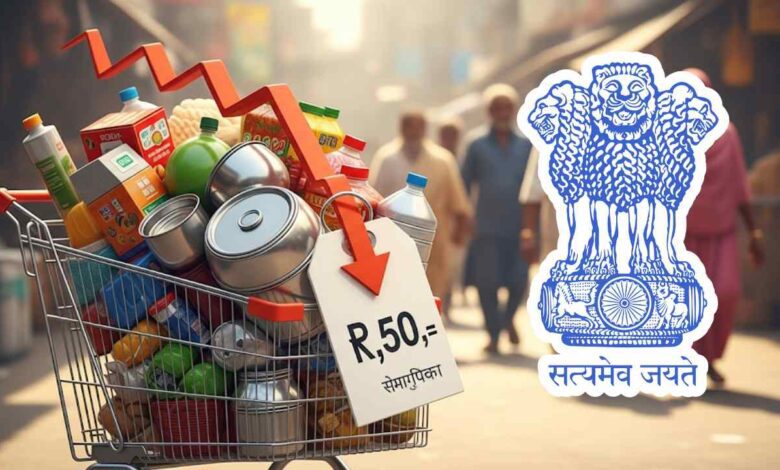GST Reform: A Groundbreaking Change in GST! Group of Ministers Approves Center’s Proposal, Prices of Many Items May Decrease

GST Reform: Great news for the common people. The Goods and Services Tax (GST) system in the country is about to undergo a groundbreaking change. The Group of Ministers (GoM), composed of state finance ministers, has accepted the central government’s proposal to replace the current four-tier tax structure with two main slabs.
It is expected that the implementation of this new system could lead to a decrease in the prices of many daily-use items, which will have a positive impact on the lives of the middle class and the general public.
The approval of the center’s proposal by this GoM, led by Bihar’s Deputy Chief Minister Samrat Choudhary, has paved the way for GST 2.0.
The main objective of this reform is to make the tax system simpler, more straightforward, and transparent, benefiting both businesses and the general public.
Get Instant News Updates!
Join on TelegramWhat will the new GST structure look like?
Under this new GST system, there will be two main tax rates: 5% and 18%. Currently, the country has four main GST rates: 5%, 12%, 18%, and 28%. The new proposal suggests completely removing the 12% and 28% slabs.
It is believed that this will make tax accounting and filing returns much easier.
- Which items will fall into which slab?
- About 99% of the items currently taxed at 12% will be moved to the 5% tax bracket under the new system.
- This may include items like medicines, processed foods, clothing, footwear, and other essential household goods.
- Similarly, about 90% of the goods currently taxed at 28% will be moved down to the 18% slab. This is likely to reduce the prices of items like large televisions, refrigerators, air conditioners, and other electronic appliances.
What about sin and luxury goods?
While the tax burden on goods used by the general public is being reduced, there is also a proposal to impose a higher tax on certain harmful and ultra-luxury items. This includes tobacco products, alcohol, luxury cars, etc.
A tax of up to 40% may be imposed on these ‘sin goods’. The objective is twofold: to discourage the consumption of these products and to ensure government revenue collection.
What will be the impact on people’s lives?
The implementation of this new GST system is expected to have several positive impacts on the lives of ordinary people:
- Inflation Control: The reduction in the prices of many daily-use items could provide some relief from the pressure of inflation. This will especially reduce the monthly expenses of middle-class families.
- Simplified Tax System: With fewer tax slabs, it will be easier for businesses to file GST returns and comply with other regulations. This will improve the business environment in the country.
- Increased Transparency: With only two tax rates, the entire system will become more transparent, and the tendency for tax evasion is expected to decrease.
Union Finance Minister Nirmala Sitharaman has stated that this reform will particularly benefit the common man, farmers, the middle class, and small and medium-sized enterprises. Now, this recommendation from the GoM awaits the final approval of the GST Council. Once it gets the green light, ‘GST 2.0’ will be implemented across the country, marking the beginning of a new chapter in the Indian economy.

